Trapping belt for trees from garden pests
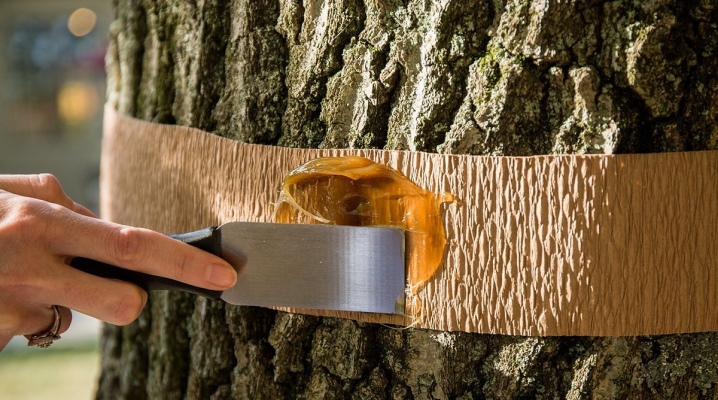
Garden pests have a huge variety of species. Many of them can cause very serious damage to trees. To deal with such parasites, you can use a special hunting belt. In this article, we will tell you more about it, and also figure out what varieties it is subdivided into.
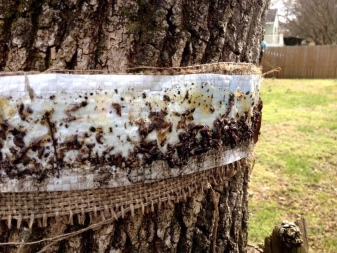
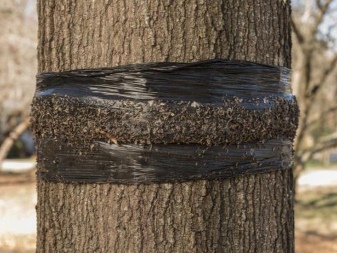
Features and purpose
A catching belt is called a small-sized device, presented in the form of a wide strip. This thing is made from various materials. The main purpose of the trapping belt is to collect and destroy insects on the trunks and branches of trees. Gardeners use this device as a mechanical plant protection method. As for entomological research, the trapping belt is used to collect absolutely any insects that live on trees.
Most often, these devices are used if there is an active reproduction of caterpillars, various moths, fruit ants, flower beetles that go to winter under the scales of old tree bark or into the soil around the trunk.
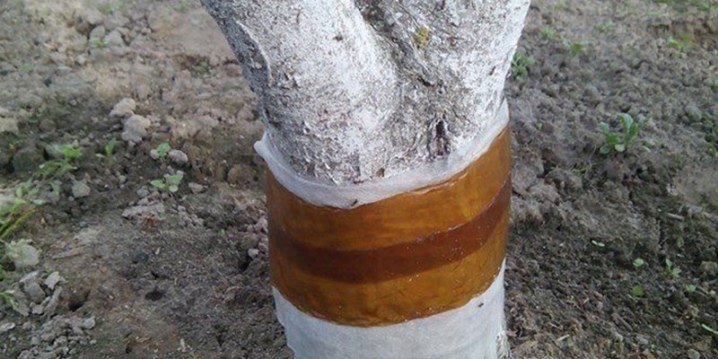
Many gardeners use trapping belts all the time. This method of controlling garden pests is considered one of the most effective. The use of these devices is preferable, since trapping belts of a dry or sticky type, as a rule, are characterized by complete environmental safety. In addition, these things turn out to be very effective if they are used in conditions of small areas, where, for one reason or another, it is not possible to resort to chemical methods of pest control.
This method of dealing with insects and various pests does not have serious drawbacks, but it is highly laborious.
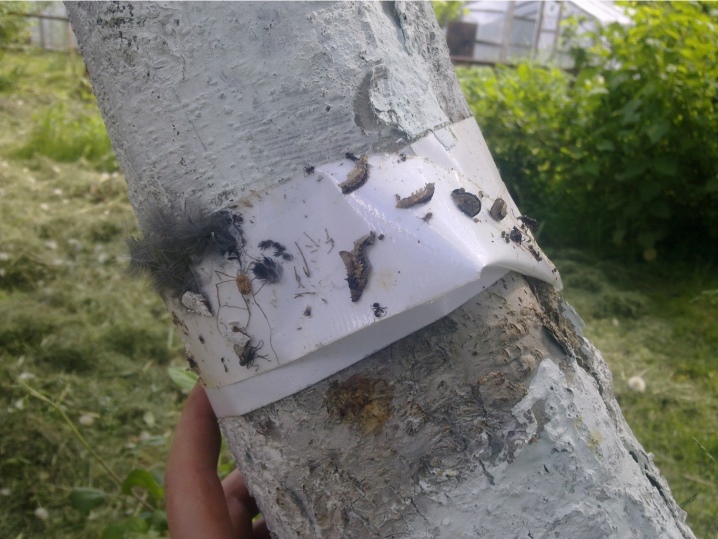
A strip of trapping belt is usually firmly fixed to the tree trunk. Due to this, insects and various parasites cannot get to its crown. If you make such a belt according to all the rules, then it will turn out to be more useful and effective than many chemicals and solutions.
There are several types of fishing belt. Each of the options provides for its own subtleties of manufacturing. This is another fact that attracts gardeners - such products can be made by yourself. True, such work is usually undertaken only by those summer residents who have free time.

Views
As mentioned above, hunting belts are different and are divided into several types. Each of them has its own distinctive characteristics. Different materials are used to make different belts. Let's take a closer look at the existing varieties of pest traps under consideration.
Adhesive
In another way, glue types of belts are called sticky. They are used by many summer residents, since such devices are attractive for their high efficiency. They do an excellent job with their main responsibilities, and they use various materials to make them. These belts can be paper or woven. The strips are pre-impregnated with a specialized adhesive. It is due to the presence of such glue on the strips that insects stay on the surface of the belt. Their further journey along the trunk ends there, since they have no opportunity to peel off on their own.
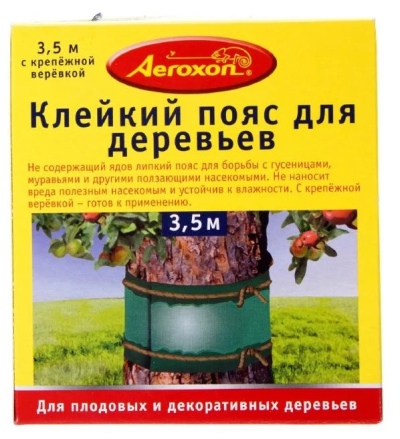
Oil
Oily varieties of trapping belts are very effective. The simplest and most affordable materials are also used for their manufacture. A particularly well-considered device scares off ants, which very poorly tolerate the very smell of oils. When insects get to the oil belt, they can no longer go up. The aroma of the oil overpowers their own odor, which greatly disorients the insects.
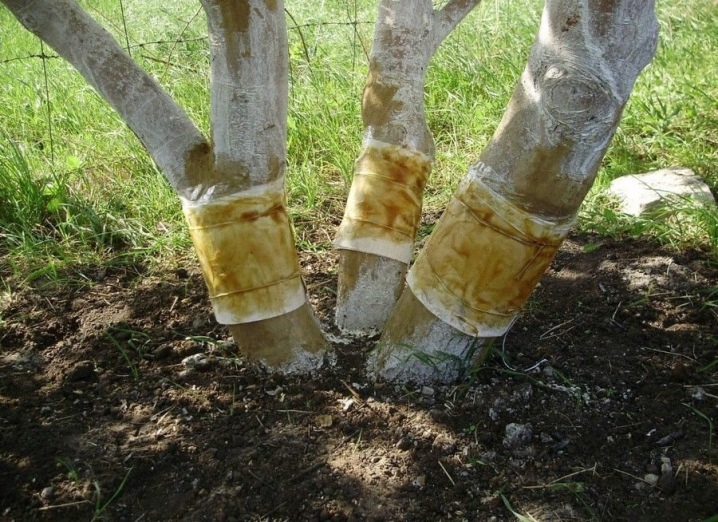
With the use of oil, very good trap belts are made to protect garden trees. In most cases, these devices are based on woven strips, which must be periodically moistened in oil components. Thus, you can quickly get rid of pests crawling along the trunk.
Deterrent
This type of fishing belt is used by summer residents very often, since it is characterized by high efficiency, it can effectively protect trees from insects. For the manufacture of such a thing, insecticides are most often used. They are well impregnated with the belt itself. Those insects that end up on its surface will certainly die. For the purpose of impregnation, you can use insecticides designed specifically to destroy various pests.
To protect garden trees from annoying insects, their trunks can be wrapped with fabric strips soaked in kerosene, diesel fuel or carbolic composition. The pungent smell that these mixtures exude can completely scare off parasites. After 10-14 days, as the aggressive aroma wears off, it makes sense to renew the impregnation again.
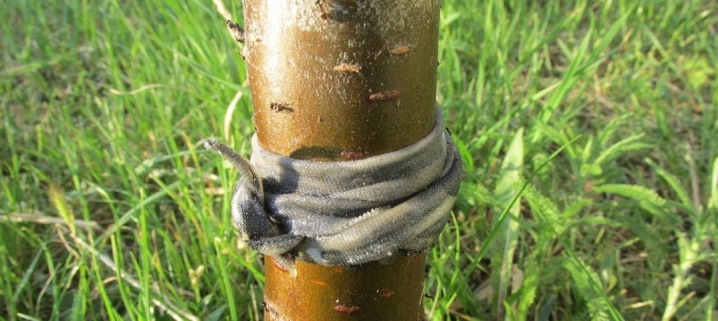
Tissue that has been well soaked in suitable fluids can also be decomposed in the soil around the trunk circle. This is a great way to ensure that insects are kept away. We are talking not only about those pests that crawl along the trunk, but also those that are soil-dwelling.
If the use of such a device is planned, then one limitation must be taken into account. It is strongly discouraged to use deterrent trapping belts for young seedlings, so as not to cause them to burn.
The best remedies
A hunting belt can not only be made at home with your own hands, but also purchased in many stores. Many large manufacturers produce similar devices. Currently, the most popular and purchased are several products.
-
"Mashenka". With this name, effective double-sided belts are produced. They are often used to protect trees from caterpillars and ants. Before fixing the "Mashenka" belt, it is imperative to thoroughly clean the top layer of the tree bark using a brush. Adhesive products "Mashenka" require caution when fixing them. In addition, it is important to follow the rules of personal hygiene.
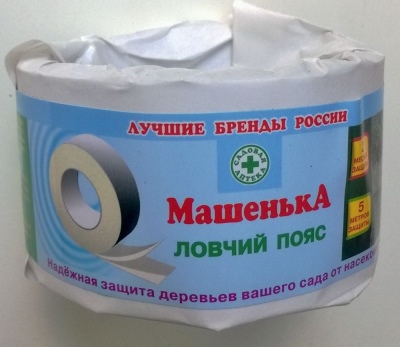
-
"Trap". For mechanical trapping of insects, you can safely use the "Trap" belt. With a similar product, you can catch carriers of aphids, fruit weevils, various butterflies, caterpillars and many other pests. Belts "Kapkan" are characterized by the presence of treatment in the form of moisture resistant glue. Such specimens are non-toxic, environmentally friendly.
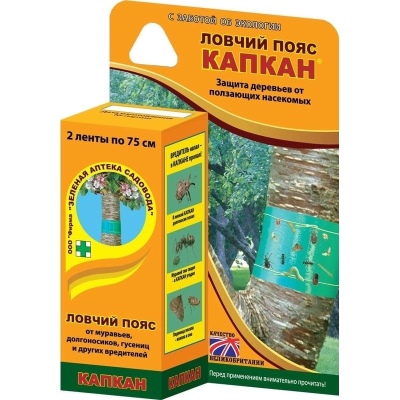
- No Guest. These trapping belts are made in Russia and are designed to protect garden trees from crawling pests. Most often they come across ants and caterpillars. As a rule, one single set is enough for wrapping several barrels at once based on their thickness indicators. No Guest belts are environmentally friendly and contain no hazardous poisons. Products are resistant to moisture and do not lose their properties over a long period.

These are just some of the best remedies for protecting garden trees from the "visits" of various insects. They are in great demand because they meet all the declared characteristics.
How to do it yourself?
It has already been said above that it is quite possible to make trapping belts with your own hands. Many summer residents use home-made devices, since in efficiency they are often in no way inferior to ready-made purchased copies. Let's take a look at step-by-step instructions on how to make trapping belts yourself.
From sticky tape for flies
This type of belt is often used in conjunction with other types of traps. However, fly tape specimens demonstrate adequate performance even when used alone. Many gardeners consider such specimens to be the most effective and efficient, especially if you need to catch caterpillars, bugs and ants.
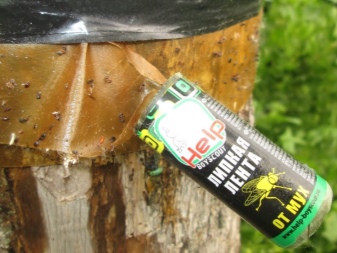
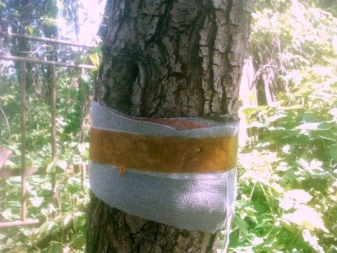
To prepare such a trap, take ordinary sticky tape for catching flies. In such products, a rather caustic and aggressive poison is initially present, so they can cause some harm to the tree bark. For this reason, it is advisable to pre-cover the barrel with a film, and only then wrap it with tape about 15-20 cm wide.
Foil
Another type of effective trapping belt can be made from foil. To do this, the tree trunk will need to be tied with special corrugated cardboard. This should be done in a couple of layers. The width of the cardboard should be between 20 and 25 cm. This component will need to be secured at the bottom and top with wire.
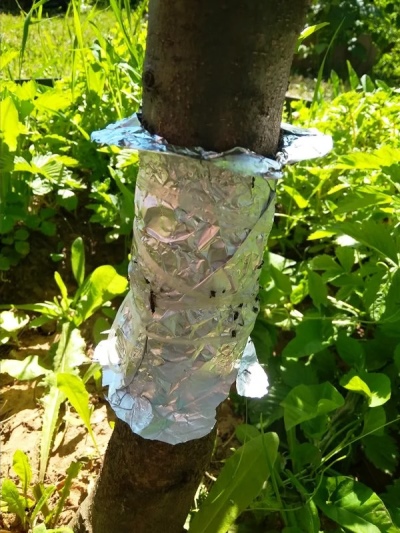
The middle of the belt will need to be tied with foil, and on top of it tie another 2-3 threads of twine, pre-treated with solid oil. Foil in this case is a replaceable material - it is permissible to use paper instead, but the grease can soak it and leave a burn on the tree.
From padding polyester
Fruit trees in the garden are often protected from insects by means of a homemade trapping belt made of padding polyester. In addition to this material, you should use paper, burlap and glass wool. The essence of the work will be to build something like a kind of "skirt" on the tree trunk, forming a funnel-shaped detail. As soon as the insects get to it, they will immediately run into an insurmountable obstacle, on which their path will stop.
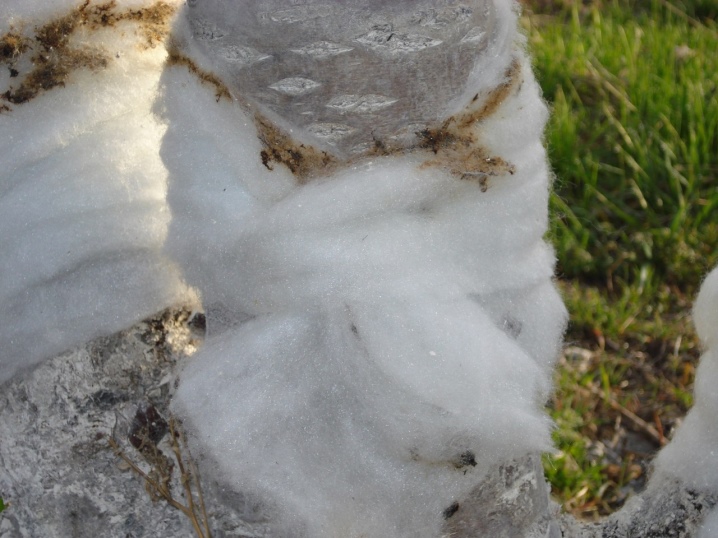
The funnel can be made so that it "looks" down. Such a device can effectively protect the tree from ants that like to climb up the trunk. And also the direction of the funnel can be exactly the opposite to protect the tree from descending pests.
How to use?
It is not enough to make or fit a hunting belt correctly. It still needs to be installed and removed correctly. Only the correct use of such a garden device will make it really useful and effective. Let's take a closer look at the peculiarities of using trapping belts for trees.
-
It is necessary to strictly adhere to the instructions for the use of trapping belts. Before installing them, it is imperative to thoroughly clean the wood stem from the old bark and lichens. It is important to repair any cracks or damage that may exist. This also applies to the hollow on the trunk.
-
The belts must be installed at a height of 20 to 40 cm from the ground. First, the stem of a fertile garden tree will need to be wrapped in burlap or other similar material with a width of 30-40 cm. This component must be installed, laying in 2-3 layers.
-
Burlap or other used material, which wraps the tree trunk, will necessarily need to be fixed as tightly and reliably as possible.
-
As the next step, you will need to cut the film to the length of the girth of the tree. The width of this component should reach 20-25 cm.
-
The film must be firmly fixed. Once a month, it must be treated with a special aerosol, deterrent gel or other formulations based on what type of trapping belt you wish to use.
-
Further inspection of such traps should be done regularly and frequently. All accumulated pests must be removed in time.If there are too many of them in such a trap, then they may well get out of it. That is why it is strongly discouraged to delay their destruction.
-
When clearing the accumulated traps, it is recommended to release those insects that are beneficial and not dangerous for the garden. For example, it can be ladybugs or ground beetles. To prevent the hunting belt from attracting butterflies, bees or bumblebees, it is advisable to make it darker, not bright and variegated.
-
It should not be forgotten that trapping belts (both ready-made and home-made) must be removed during the winter season. After the completion of the operation of these devices, it is advisable to burn them together with the pests that were in them.
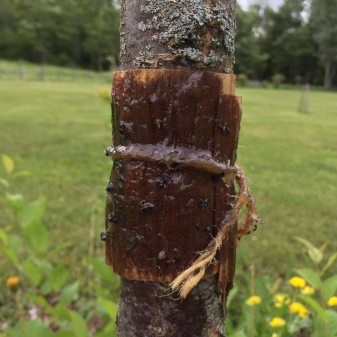

It is highly recommended that you choose the right time to set such garden traps. There are several especially poignant moments, which account for the real invasion of harmful insects on apple, cherry, plum and any other fruit trees. Such events occur at the beginning of the spring season, when the first buds bloom.
The next influx of insects occurs in the fall. At this point, most pests are preparing for wintering, which is why they move closer to the lower part of the trunk.
How to install a tree trapping belt, see the video below.













The comment was sent successfully.